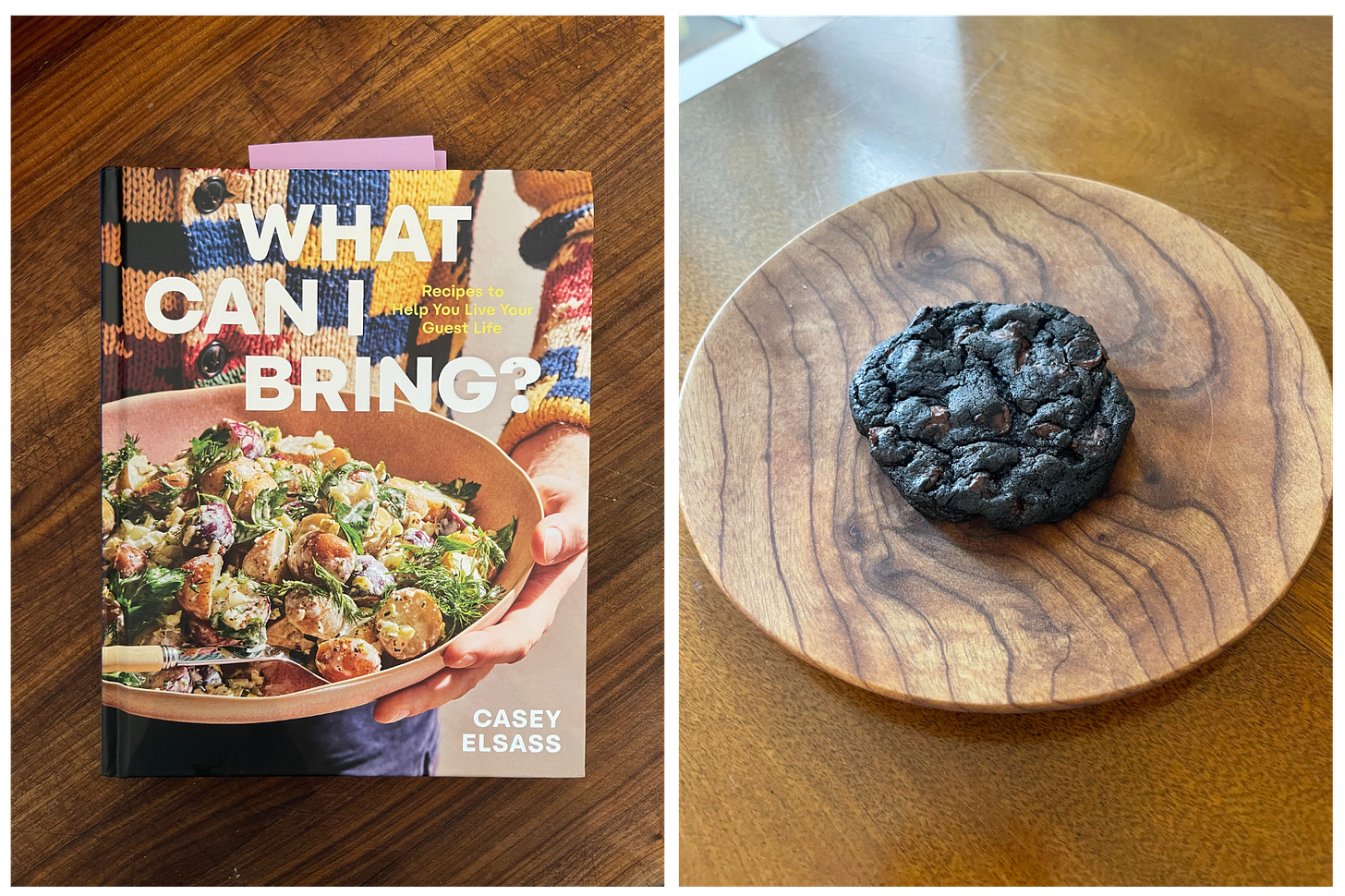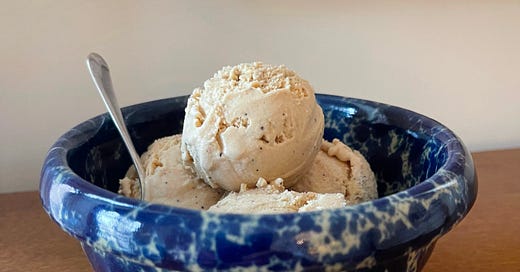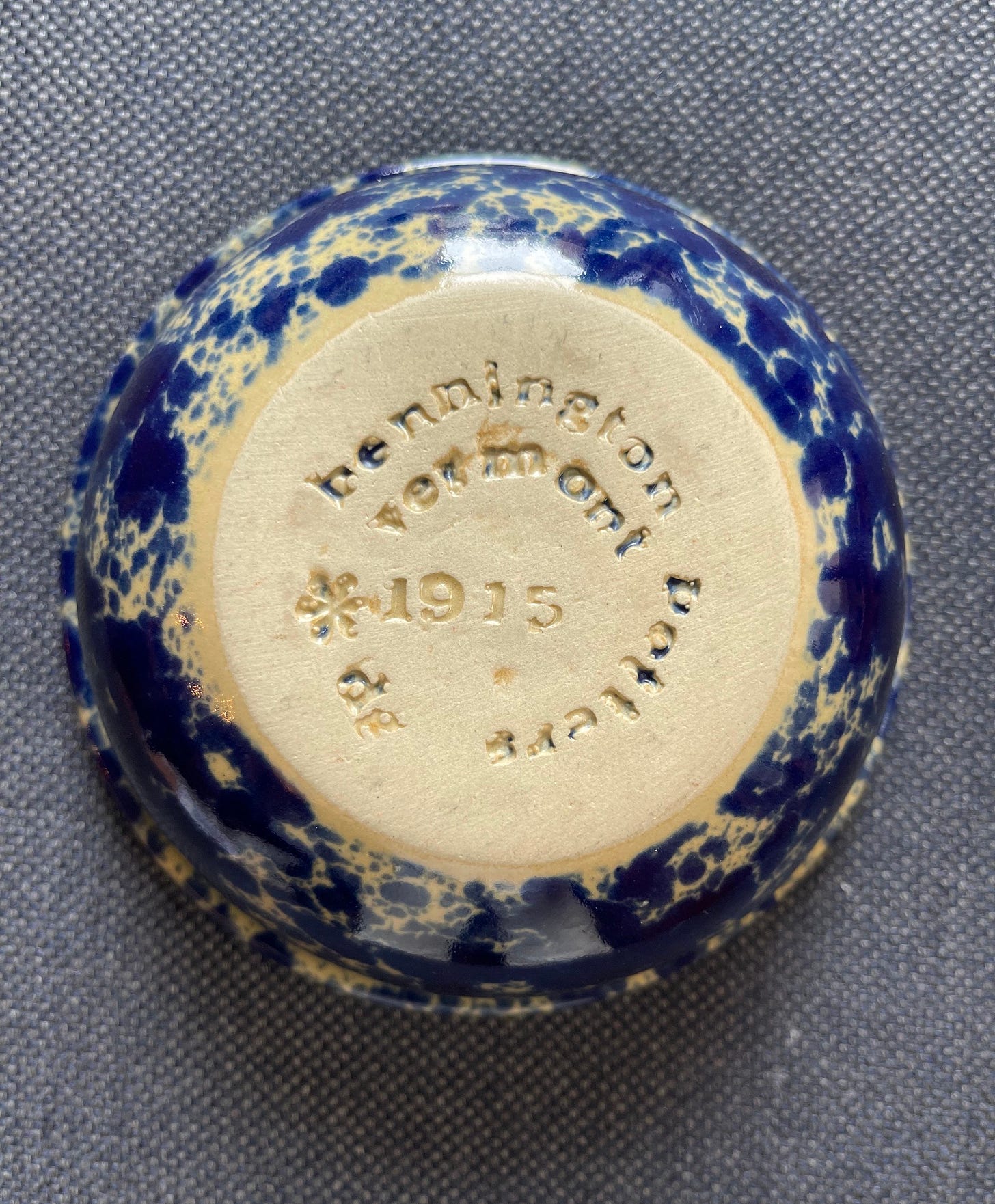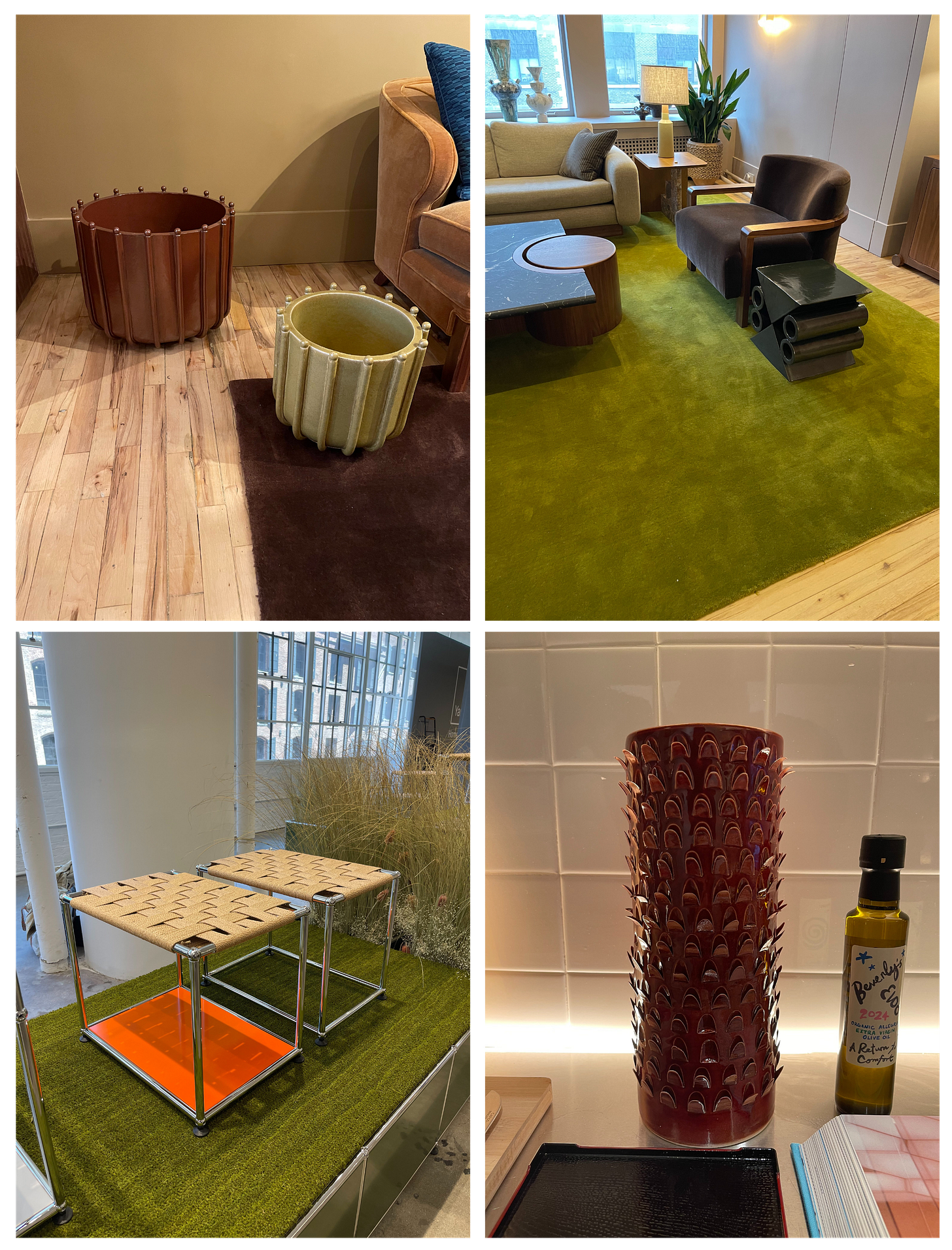Vintage pottery, NYC design finds, and cookies that make friends
Your free May post is packed with goodies.
Today is my monthly free newsletter, in which, per Substack tradition, I would give free subscribers a rundown of what they missed in the paid posts. To me, that approach feels boring for my paid subscribers and unfairly tantalizing for my free subscribers. So I’m going to make my monthly free post an eclectic mix of design finds, things I’ve been up to or fixated on, and other exciting features (okay, yes, I haven’t quite figured them all out yet). Please tell me in the comments what you like most or want more of. Keep in mind that I’m a youngest child, so I may or may not listen!
Yours in pointless micro-rebellions,
Amanda
Fasten your seatbelts: I’m going to start getting very detailed about the cookware, cooking tools, and tableware that we’re purchasing for Ojai. Our kitchen in Brooklyn has lots of nice things, but it sometimes feels like a scrapbook. I’ll open the cabinet containing the bright green glassware we registered for 23 years ago, or catch a glimpse of the garish, gold-banded china we inherited from Tad’s family, and feel that “Oof” you get from seeing your old hairstyles.
I plan to buy things for Ojai slowly. The kitchen doesn’t need to be fully outfitted when we move in. If all I have is a knife, a cutting board, and a cast iron pan, we can still eat well for a few months (forever, if we wanted to). I want to enjoy the process of collecting and assembling our homewares, and I also don’t want to cheap out, or make decisions I later regret. I’ve spent my career testing, curating, designing, and selling these products. I love this world and I plan to savor the journey.
Today, let’s talk pottery. Specifically, my quest for a mid-century classic. The area in and around Bennington, Vermont, has been known for pottery since the 18th century, though the local industry waned in the early 20th century. In 1948, David Gil founded Bennington Potters and revived those stoneware making traditions. The company still makes the Blue Agate line, but I’ve been seeking out the vintage versions over the past few years. They have a fine stippling that gives the finish more depth and feels good in the hand—and the deep blue glaze against the sand-colored clay base looks both plainspoken and chic. Blue Agate is not as rare as Black on Green—which is fabulous, but it might take me decades to find enough green pieces to serve a meal on!
A factor to consider when sourcing: Try to snag pieces stamped “1915” and “dg” on the bottom (an internal style number, not a date), which indicates they were designed by Gil. I particularly like the rolled edge bowls, which have a wide, folded rim and strike me as the ideal size for cereal and ice cream (a few appropriately whopping scoops!).
Two summers ago, I found a few bowls at Sage Street Antiques in Sag Harbor. (You’ll get to know Sage Street because it’s my favorite vintage shop.) I needed to source a few more so I tracked down George Virtue, who sells a lot of vintage Bennington Potters pieces through his Facebook shop, Muggsy’s Antiques & Collectibles. Once I amassed six bowls, I shipped them to our storage unit in L.A. One broke along the way. So I recently sourced a couple more.
How many plates/glasses/bowls should I buy? Our indoor dining table seats six to eight, and so does our outdoor dining table. Should I get 10 to account for breakage and extra guests? Let me know the number you recommend, and why, in the comments section below. Thanks!
My next career move will likely involve home products, and I’m always keeping an eye out for what’s happening in the field. Below are a few finds from recent visits to trade showrooms, shops, and industry shows around New York, including The Future Perfect, Beverly’s, Little Gem, Lawson-Fenning, ICFF, and Shelter (a new indie show that was held at the same time as ICFF).
A proper home writer would group things into trends, but I hate trends, so I’m just going to feature what I liked:
Clockwise, from top left: Devin Wilde’s planters; my friend Jojo just got this fabulous “Milano green” rug from Nordic Knots for her Bushwick apartment; I was wowed by this scaled vase at Beverly’s on the Lower East Side; cool benches by Henry Julier for USM, at Shelter.
Former photographer Ilan Rubin has started a terrific housewares line, Ilan. He’s turned the classic apple box that’s used on sets (for holding up tables, as a step stool, as a chair) into a handy table for the home. This design—called the Confessional—was my favorite. His magnetic hook board was pretty neat, too.
Astep’s Pepa portable lantern, as demonstrated by Tess O’Reilly from Ameico.
Clockwise, from top left: A new take on ceramic art by Roll & Hill and a group of collaborators; a highly expressive vase at The Future Perfect; Virginia Sin’s new ceramic lattice sconce and her folded sconce.
Clockwise, from top left: A matte black toilet seat–I like!; printed grasscloth wallpaper by The Lawns; coupled salt and pepper grinders by Design Dysphoria x Gotham; a room by Apparatus Studio to match my favorite cocktail, the Americano.
Yamazaki makes excellent functional and storage products. This little unit fits under the sink for storing dishwasher pods, dish soap, sponges and the like, with shelves that slide out for easy access.
Recipe developer and author Casey Elsass recently came out with a cookbook called, What Can I Bring? As you may have guessed, it’s filled with easily transportable recipes. There are no main courses, just drinks, dips, salads, breads, and desserts—a diet I could be pretty happy eating most of the time. The Pickled Potato Salad caught my eye (the potatoes are doused with pickle brine and pepperoncini after cooking). So did the Flourless Chocolate Olive Oil Cake. But with my kids home from college, I settled on Subway Cookies, which are made with black cocoa and peanut butter. As Casey explains in the headnote, once when he was carrying the cookies on the subway, they smelled so good that two strangers sitting next to him took samples. Proof that New Yorkers aren’t jaded and neurotic these cookies transcend the usual boundaries of personal space.

Subway Cookies
Makes 12 cookies
Ingredients:
½ cup (1 stick) unsalted butter
⅓ cup (85 grams) creamy peanut butter
½ cup (100 grams) granulated sugar
½ cup packed (110 grams) light brown sugar
1 teaspoon kosher salt
1 teaspoon pure vanilla extract
1 large egg
¼ cup (30 grams) black cocoa powder
½ teaspoon baking soda
½ teaspoon baking powder
1 cup (140 grams) all-purpose flour
1 (12-ounce) bag semisweet chocolate chips
Special Equipment:
2-ounce (¼-cup) cookie scoop
Instructions:
Preheat the oven to 350°F and set a rack in the center. Line two rimmed baking sheets with parchment paper.
In a large saucepan, combine the butter and peanut butter. Set over low heat and whisk occasionally as the butter and peanut butter melt together. When they’re about 50 percent melted, remove from the stove and let the residual heat finish the job.
Add the granulated sugar, brown sugar, and salt; whisk into a thick, soft paste. Add the vanilla and egg and immediately whisk. The mixture will seize up, but keep whisking until it’s nice and light.
Add the black cocoa, baking soda, and baking powder. Switch to a rubber spatula and fold until completely combined into a glossy mixture.
Add the flour and chocolate chips and fold, really getting around the sides and bottom, until it’s just combined but not overly mixed.
Use a cookie scoop to portion five scoops of dough—scraping on the side of the bowl so it’s a packed scoop—onto one of the prepared baking sheets, leaving 2 inches between each scoop.
Slide the baking sheet into the oven and set a timer for 12 minutes, turning the sheet around at 6 minutes, until the cookies are puffy and slightly spread.
While that first batch bakes, scoop the second batch on the other baking sheet and slide it in as soon as the first one comes out. (And remember to set your timer!)
As soon as a sheet comes out of the oven, lift it a few inches above the counter and let it drop. Repeat two more times to flatten and spread the cookies, then let them cool completely on the sheet, about 1 hour. Repeat this process when the second sheet is done.
















Regarding number of Bennington place settings- target 12
It would account for breakage and when you have to squeeze a few more at the table. 8 can easily become 10, your family of 4 + 6 guests
I have always admired your writing and your wonderfully creative approach to cooking and making a home. But in today's world there's something that feels a little tone-deaf about the process of no-expense-spared furnishing of the lovely new house and your kitchen. I admire your determination not to "cheap out," but an increasing number of people in this troubled country don't have that option.